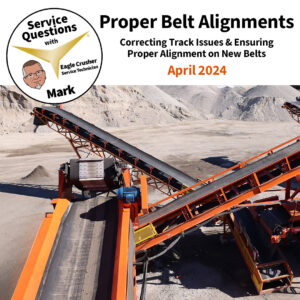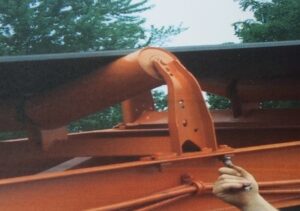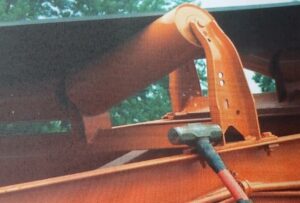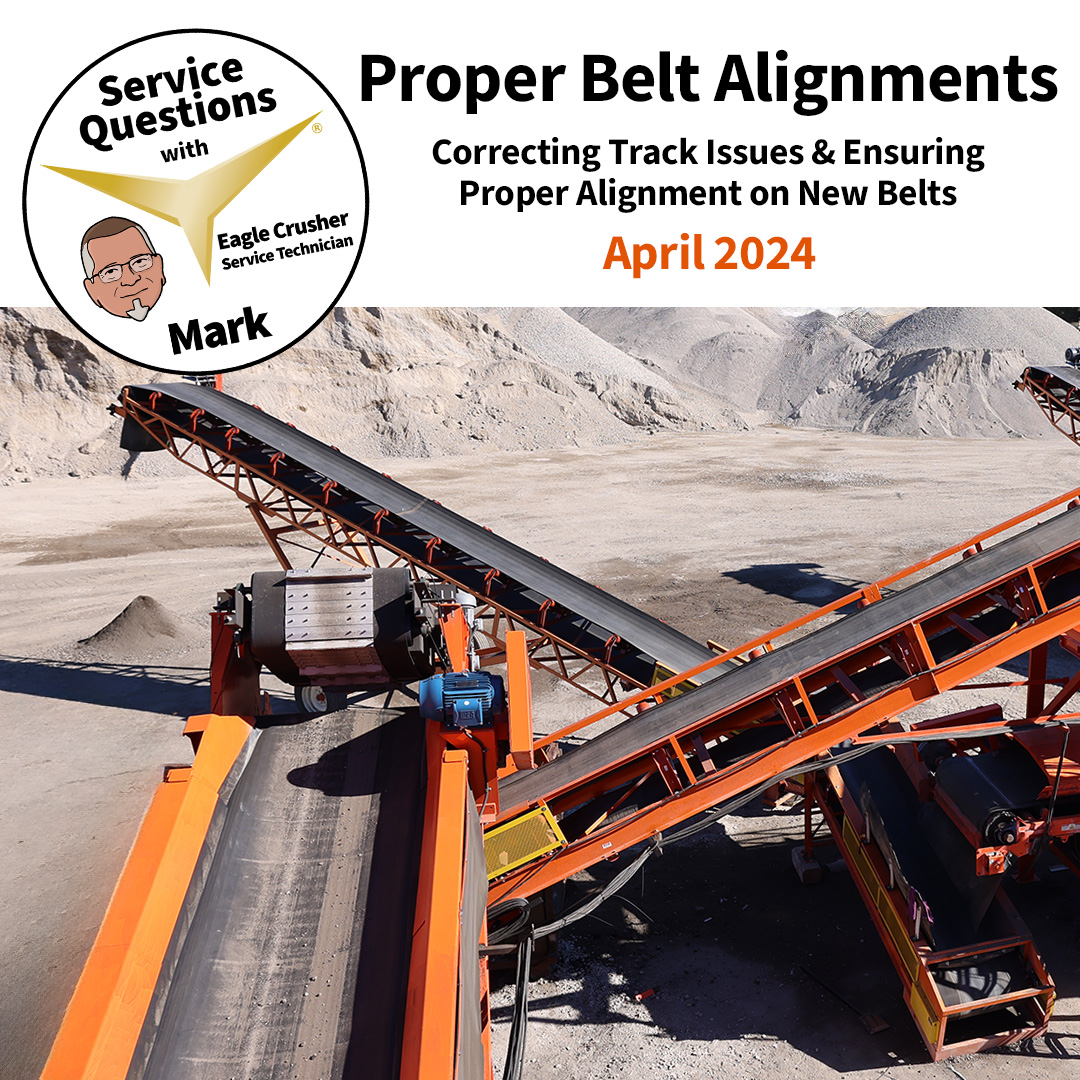Service Questions with Mark: Proper Belt Alignment
Proper belt alignment is key for an optimal performance of a rock crusher, ensuring seamless material flow and preventing costly downtime. Whether you’re dealing with a newly installed conveyor system or troubleshooting belt tracking issues, the alignment of belts is paramount to the efficiency and longevity of your equipment. In this “Service Questions”, Mark will dive into the critical aspects of achieving and maintaining precise belt alignment to ensure the smooth operation of your rock crusher while maximizing productivity.

Correcting Tracking Issues
Keeping your crusher level is an important part of getting belts to track properly. You may find yourself having to track your belts if you have recently moved the conveyor or crusher. Let’s go over how to get your belts back in alignment. Please note these adjustments should never be made with your unit powered up – lock out and tag out before adjusting.
![]()
An example of a belt tracking to the left.
Tracking issues by the head pulley
If your belt is running to the left side of your head pulley, you will need to loosen the top three conveyor belt idlers on the left side of your conveyor and move them toward head pulley. This action will drive the belt to run back to the right. Additionally, you can also loosen the top three idlers on the right side and move them toward the tail pulley to gain the same results.
If your belt is running to the right side of your head pulley, you will need to loosen the top three conveyor belt idlers on the right side of your conveyor and move them toward head pulley. This action will drive the belt to run back to the right. Additionally, you can also loosen the top three idlers on the left side and move them toward the tail pulley to gain the same results.
Tracking issues by the tail pulley
If your belt is running off track to the left side of your tail pulley, you would adjust your return idlers, or the idlers underneath the conveyor. To get set up, you will need to get under the conveyor and face tail pulley. You would loosen and move the last three idlers on your right side (or the left side of the conveyor) toward the tail pulley and, if needed, the left side (or the right side of the conveyor) upward towards the head pulley.
If your belt is running off track to the right side of your tail pulley, you would adjust your return idlers, or the idlers underneath the conveyor. To get set up, you will need to get under the conveyor and face tail pulley. You would loosen and move the last three idlers on your left side (or the right side of the conveyor) toward the tail pulley and, if needed, the right side (or the left side of the conveyor) upward towards the head pulley.

Loosen idlers from conveyor.

Then tap idlers in the desired direction.
Ensuring Proper Belt Alignment on New Belts
With any belt, it is important to make sure your take ups, which moves the tail pulley in and out to tension the belt, are equally extended or retracted. Sometimes a little adjustment of your belt is all that is needed, so tweaking the take ups may do the trick.
Training a new belt
Training in the new belts will be done in the same fashion as the above directions: ensure the take ups are equal prior to adding the new belt and then making slight adjustments. After every adjustment, it is recommended that you start the unit back up and let the belts make several revolutions to accurately see what adjustments were made. Please note that shorter belts will not need as many revolutions as the longer belts.
Continuous care for new belts
New belts will stretch and will need to be adjusted a few times before it finds its happy place. Another important factor in maintaining the alignment of your belts is that all though you may have a belt running true and straight, when material hits the belt, it may change its tracking. It is important to try to get your material to hit the center of belt to prevent the material pushing the belt off track.
Of course, it’s important to reiterate, never work on retracking, tensioning, aligning, or training your conveyor belts while they are in operation. Always lock out and tag out the conveyor or crushing plant prior to working on them.
Knowing who to reach out to for more information.
While these blogs are a good starting point, it is important to address your owner’s manual, authorized Eagle Crusher dealer, or Eagle Crusher’s service team, for information regarding your specific unit. Come back next month when James will cover the topic of how to not clog the crushers or check out our recent “Service Questions” for more recommendations.
Trust the Strength of Eagle Crusher.
Eagle Crusher consistently leads the industry in new product innovations. We stand by our products with unsurpassed service and support to make your job easier.
Durability and longevity
24-hour parts and service
American made
Highest productivity and profits
High resale value
Celebrating 100+ years of service
To learn more about Eagle Crusher’s products, service, and support, please visit our website.



